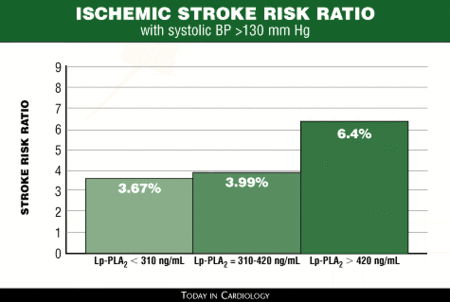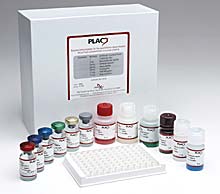FDA grants clearance for blood test in stroke risk assessment
Previously approved for CHD risk assessment, diaDexus’ PLAC test is the first to be used in ischemic stroke risk assessment.
Click Here to Manage Email Alerts
The PLAC blood test that measures the levels of the protein Lp-PLA2 recently received Food and Drug Administration marketing clearance for use in assessing ischemic stroke risk associated with atherosclerosis. Developed by diaDexus Inc., the test has been approved for determining risk for coronary heart disease since 2003.
“The test must be run in a CLIA certified high complexity laboratory. Individuals with high levels of lipoprotein-associated phospholipase A2 (Lp-PLA2) as measured by the PLAC test are at nearly twice the risk for future ischemic stroke, independent of other risk factors,” said Christie M. Ballantyne, MD, director of the Center for Cardiovascular Disease Prevention at Baylor College of Medicine and the Methodist DeBakey Heart Center.
Enzyme predicts coronary events
The MONICA study, conducted by Wolfgang Koenig, MD, department of internal medicine II-Cardiology, at the University of Ulm Medical Center in Germany, showed that the enzyme may possibly predict the risk of a coronary event up to 14 years prior to its occurrence.
According to Ballantyne, “current U.S guidelines for prevention of cardiovascular disease are based on the risk for development of coronary heart disease and do not include risk for stroke. The PLAC test can provide critical information about a patient’s risk for stroke that might have otherwise been missed.”
|
|
The test is intended to be used in conjunction with clinical evaluation. Patients with one or more traditional risk factors for stroke — such as diabetes family history, smoking and obesity — and who also have high levels of Lp-PLA2 would benefit from the early predictor of stroke. “This would warrant more aggressive treatment programs to prevent stroke,” said Ballantyne.
|
|
The ARIC (National Heart, Lung, and Blood Institute’s Atherosclerosis Risk in Communities) study, led by Ballantyne, examined the relationship between Lp-PLA2 and incidence of ischemic stroke.
Although lipids are strong predictors of coronary heart disease, they are not very useful in predicting stroke. The ARIC study demonstrated that elevated Lp-PLA2 levels predicted a doubling of ischemic stroke risk in patients, even after accounting for both traditional and novel cardiovascular risk factors. Traveling primarily on LDL particles, the enzyme Lp-PLA2 enters the vascular bed and catalyzes the hydrolysis of oxidized LDL to generate two byproducts that appear to trigger an inflammatory response, suggesting that the enzyme may be a link between lipoproteins and vascular inflammation associated with atherogenesis.
The PLAC test is available through labs nationwide. – by Craig Whitaker


